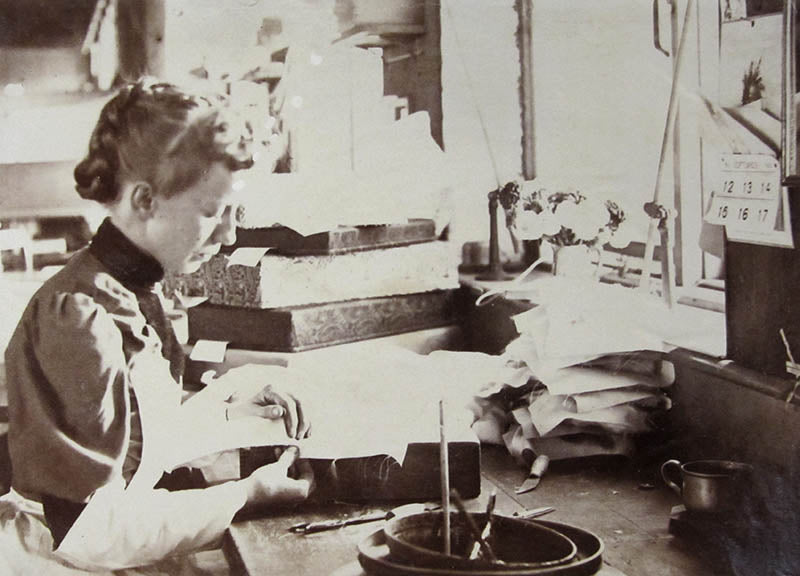Your Cart is Empty
FREE standard shipping to the continental US.
FREE standard shipping to the continental US.
FREE standard shipping to the continental US.
June 03, 2020 3 min read
The Gorham Manufacturing Company was a "progressive" employer of its era, not only known as a fair employer, but one where there were well-paying, skilled jobs for women as well as men.
During the later 19th century, many forces were changing employment in the United States. One of those changes was the increasing role of urban factory employment. As the century closed, many women, as well as men, were leaving the rural economy for work in cities.
Gorham employed women in several departments and took pride in their achievements, publishing a book Women's Work at The Gorham Manufacturing Company about 1892. In this book, one can find a description of many of the jobs women did. The language and some of the thinking is very much of the period. However, the number of jobs and the level of skill is remarkable for the time.
One of Gorham's great achievements of the 1890s was their enameling department that won so many awards at the 1893 Columbian Word's Fair. Women decorated painted enamels and plique-à-jour, working under Count Gyula de Festetics, head of the department. Festetics was proud of the accomplishments of the female employees, whose work was, "in some respects fully equal to their male co-workers in designing and execution." In the photo at the top, Festetics can be seen standing on the far right. As can be seen, women were doing almost all the work. Click here for an important example of this work, now in the collection of the Newark Museum.

Women worked in the Case Room (the "Box" department) where presentation cases for both flatware and holloware were made. Women crafted the silk and satin linings and blocked the case. The work was, "particularly adapted to the nimble deftness of touch so natural to the average woman, and so foreign to the average man." (The authors fail to understand that a few rooms away, some of the world's finest chasers - males - are nimbly and deftly decorating silver! But it is the 19th century.) See here for an example of a presentation case.

Women made flannel bags for the silver as well.

Women created the photo albums that the salesmen used, finishing the photos and mounting and arranging them. (Some of these albums survive in the archives at Brown University and are a remarkable resource.)

Women painted the decoration on acid-etched work and silver deposit on pottery, porcelain, and glass. Silver deposit on both pottery and glass were new lines introduced around the time of the Columbian World's Fair in 1893 (and Gorham won several of the awards for them). Acid-etched decoration on silver became popular around 1880 and did not go out of fashion until well into the 20th century. This decoration was popular sometimes as a monogram or inscription with other decoration, sometimes as all-over decoration. It is in this decoration that we most commonly see the work of female employees today. Some of these are important commissioned pieces; some are souvenir spoons with acid-etched bowls.

Women took part in the creation of many pieces at Gorham, and their pioneering efforts are little recognized and little appreciated today.
Sign up to get the latest updates and current musings in our occasional newsletter…
